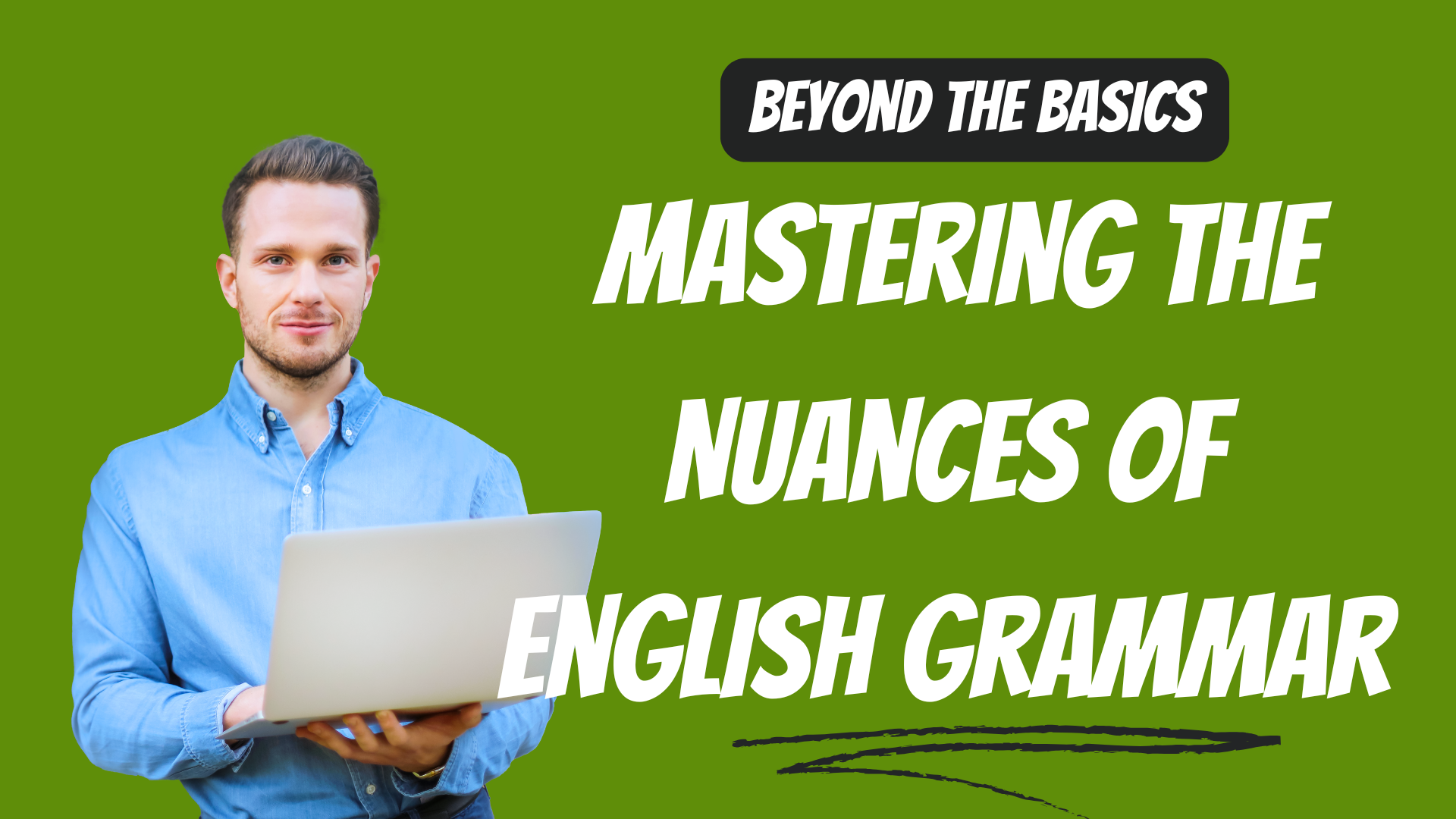Beyond the Basics: Mastering the Nuances of English Grammar
Tired of grammar guides that only cover subject-verb agreement and the parts of speech? If you’ve mastered the fundamentals and are ready to take your English language skills to the next level, you’re in the right place. Advanced English grammar is all about those subtle complexities that distinguish a good writer from a truly masterful one.
In this post, we’ll dive deep into English grammar by exploring four crucial nuances that often trip up even native speakers. Get ready to elevate your writing!
1. The Subjunctive Mood: More Than Just ‘If I Were’
The subjunctive mood expresses a wish, a doubt, a suggestion, or a hypothetical condition. It’s most famous for the phrase “If I were,” but its usage is broader and more powerful.
Key Use Cases:
-
Hypothetical Conditions (Contrary to Fact): Use were with singular subjects in ‘if’ clauses.
-
Basic: If he was here, we could start. (Informal)
-
Advanced: If he were here, we could start. (Subjunctive)
-
-
Wishes and Demands: Use the base form of the verb after verbs like suggest, demand, request, recommend, insist, and propose and after expressions like It is essential that or It is important that.
-
Example: We request that she be present for the meeting. (Not is or will be)
-
Example: It is essential that he read the instructions carefully. (Not reads)
-
2. Perfect Participles: Condensing Complex Sentences
A perfect participle is formed by adding “having” to the past participle of a verb (e.g., having written, having finished, having been). It’s a sophisticated tool for showing that one action was completed before a second action began. This is key for achieving concise and professional writing.
How to Use Them:
-
Structure: Having + Past Participle, [Main Clause]
-
Example 1: Having finished the report, she left the office. (Means: After she finished the report, she left the office.)
-
Example 2: Having been warned about the traffic, they left early. (Means: Because they were warned about the traffic, they left early.)
Perfect participles allow you to eliminate clunky subordinating conjunctions and create a smooth flow, which is a major component of nuanced English writing.
3. The Power of Correlative Conjunctions
Correlative conjunctions are pairs of words that join grammatically equal elements in a sentence. The nuance here lies in ensuring parallel structure. Whatever grammatical element follows the first part of the pair must also follow the second part.
Common Pairs & Parallelism:
| Correlative Pair | Correct Parallel Structure | Incorrect Structure |
| Not only… but also | He is not only a great writer but also a skillful editor. (Noun + Noun) | He is not only a great writer but also edits skillfully. (Noun + Verb) |
| Either… or | You can either take the bus or take the train. (Verb + Verb) | You can either take the bus or the train. (Verb + Noun) |
| Whether… or | We must decide whether to invest now or wait until next quarter. (Infinitive Phrase + Infinitive Phrase) | We must decide whether to invest now or waiting until next quarter. (Infinitive Phrase + Gerund) |
Mastering parallel structure with these conjunctions is critical for advanced grammar proficiency and clear communication.
4. Distinguishing Restrictive vs. Non-Restrictive Clauses
This is where the humble comma takes center stage! These clauses, often introduced by relative pronouns like who, which, or that, are about necessary versus supplementary information.
-
Restrictive Clause (NO Commas): The clause is essential to the meaning of the sentence. It restricts or defines the noun it modifies. Use that or who.
-
Example: The students who studied hard passed the test. (Only the hard-working students passed.)
-
-
Non-Restrictive Clause (Use Commas): The clause provides extra, non-essential information. You could remove it and the sentence would still make sense. Use which or who.
-
Example: The final exam, which was unexpectedly difficult, caused a lot of stress. (The exam caused stress, and the fact that it was difficult is an extra detail.)
-
Using commas correctly to separate a non-restrictive clause is a key indicator of mastery in English punctuation and grammar.
Ready to Elevate Your English?
Moving beyond the basics requires a sharp eye and a dedication to practice. By consciously incorporating the subjunctive mood, perfect participles, parallel structure, and accurate restrictive/non-restrictive clauses, you’ll see a noticeable improvement in your writing’s clarity, authority, and flow.
Start reviewing your own work for these nuances today!
- Beyond the Basics: Mastering the Nuances of English Grammar
- Staying Motivated on Your OET Journey: Overcoming Challenges and Achieving Your Goals
- Writing Success in the OET: Essential Techniques and Templates
- Free OET Practice Resources: Sharpen Your Skills Before the Test
- Providing Effective Feedback to Improve Students’ TOEFL Scores


